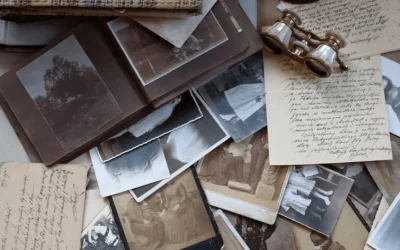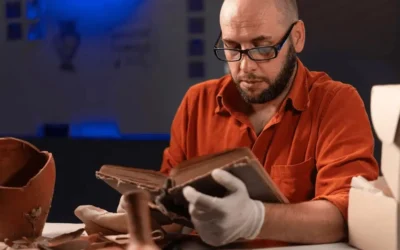Processing Room Recommendations
Margot Note
A processing room provides a workspace, separate from storage areas, where archivists may examine, sort, arrange, describe, and rehouse archival materials.
Since archival materials may be stored in processing rooms for extended periods, careful attention should be paid to these spaces’ environmental conditions, security, and finishes. These should match or closely approximate conditions in the storage room, although the temperature set for the storage area may be too low for comfort in the processing room.
An archival processing room must be supervised and restricted, large enough to accommodate several uses, well-lit, and furnished with appropriate furniture and accommodations.
Room Needs
Processing rooms should include the following:
- Large, moveable tables for sorting records
- Shelving to hold records, boxes, and archival supplies
- Adequate open space for parking book trucks and other carts
- Space to accommodate people working with the materials
- No windows or skylights
In addition, processing rooms might include:
- Counter or table space for computers, computer connections, digital cameras, or scanners
- Any equipment required for processing special-format materials, such as audiovisual materials
Providing Flexibility
The processing room should be flexible enough to meet the needs of both current and future archivists and their varying projects. Flat surfaces can be used to sort materials. Shelving erected around the room perimeter holds boxes of material undergoing processing. The space can also be used for sorting collections and holding supplies. Depending on the number of people processing, one or more workstations with computers and printers should be available for typing notes, compiling inventories, or creating finding aids. A space in the room can also be set aside for minor repairs, encapsulation, or phase box creation.
The space should be large enough for several staff members to consult materials, work together, and share discoveries within the collections. It can also be a learning area for volunteers, interns, and donors to see the work that goes into making archival collections accessible.
Accessioning Space
Repositories with active acquisition efforts may wish to include space for accessioning. This area can be used to review and rebox incoming collections and to gather accession information. In addition, the space can be used to number boxes, create box lists, or rebox collections in poor condition.
Projects in Process
The most important part of the processing room is the ability to process projects over a period of time. Doing so requires space where the materials can be safely kept between processing sessions without unpacking and packing up the materials. All that is necessary are notes about when the last session ended and what the new session should focus upon.
As a consultant, I have processed materials in the oddest areas, including spare bedrooms, dining room tables in houses full of children and curious pets, attics, basements, warehouses, storage facilities, and even a walk-in gun safe. In these open areas, I have had to factor in an hour or two to set up and break down the processing area every day, which eats up valuable time better spent in the labor of archiving. For organizations with space issues, a room devoted only to processing allows for easier work with less wasted time.
Secure and Controlled
Processing rooms provide a secure and controlled environment for handling and processing archival materials. These rooms are designed not only to protect archival materials caused by environmental factors such as light, temperature, humidity, and pests. It is also for efficient processing, which requires a high level of intellectual and physical labor.
Processing rooms provide a space for archivists to arrange and describe archival materials to make them accessible to researchers. For example, archivists arrange materials into series and subseries, rehouse materials in boxes and folders, create finding aids and inventories, and create descriptive metadata.
Margot Note
Margot Note, archivist, consultant, and Lucidea Press author is a regular blogger, and popular webinar presenter for Lucidea, provider of ArchivEra, archival collections management software for today’s challenges and tomorrow’s opportunities. Read more of Margot’s posts here.
Never miss another post. Subscribe today!
Similar Posts
Texas Archive of the Moving Image: Interview with the Digital Archivist
I recently interviewed Grace Muñoz about her work at the Texas Archive of the Moving Image. Her work on improving the discoverability of the multimedia collection is fascinating.
How to Conduct Comprehensive Archival Surveys
Conducting a comprehensive archival survey is critical to successfully managing archival collections.
Remembering History, Moving Forward Together, with ArchivEra
The Catholic Diocese of Arlington’s Director of Archives selected ArchivEra to manage their collections of historical and cultural significance, and strike a balance between security and access.
Unveiling Archival Impact
The transformative power of storytelling depends upon the strategic choices that top archival performers make and the shift from being record-keepers to change agents.




Leave a Comment
Comments are reviewed and must adhere to our comments policy.
0 Comments